
- Healey Library
- Research Guides
- Art Case Study
- Primary Sources
- Encyclopedias, etc
- Open Access
- Find Videos
- Citations This link opens in a new window
- Campus Support

Lombardy Sculpture in the 12th Century
Introduction.
To better understand a work of art, a researcher needs information not only about the work of art and the artist, but also the context in which the work of art was created. You may need information on the culture, religion, the place, the political situation, history, etc.
- He already has the information he needs on the artist and the sculpture itself.
- He needs to obtain background information about Lombardy in the 12th century, such as its culture, religion, political situation, and sculpture at that time.
The Reference Department researched this question and compiled a bibliography of journal articles, books, and encyclopedia articles for this student. Highlighted below are key resources we used to gather this information.
Getting started
- It pulls together the key resources to find journal articles, books and background information on art topics.
- You will find that tracking down information on this particular topic involves trying out a variety of databases. In some you will find many useful sources; in others just one or two.
- Remember that if you find a good source on your topic, to check its bibliography. You can see whether any of the items listed will be useful for your project also.
- The examples below use Lombardy as the geographic search term. You could broaden the search to include all of Northern Italy or limit the search more by picking a particular city or town such as Milan , Cremona , Brescia , or Bergamo . Many art and history articles are written about specific localities.
Background Information
- Oxford Art Online This link opens in a new window Oxford Art Online, an online art encyclopedia, is a great place to find information on artists, art movements, individual art works and places. Many articles include illustrations and Oxford Art Online also provides access to separate image collections. more... less... 5 concurrent users at a time
- Dictionary of the Middle Ages Call Number: REF D114 .D5 1982 Volume 7 has articles on Lombard Art, Lombard League, Lombards, and Kingdom of Lombards
- Lists every book (and film, journal, etc.) owned by the library.
- Includes both print and ebooks.
- Search by title, author, subject, or keyword. For more about searching, go here.
Search Lombard? ( The ? replaces the word ending and thus the search includes Lombard and Lombardy) The search above includes a search limit by language in English as there are numerous books on this subject in Italian. This search resulted in 27 books including the one below. From the record below, note the specific subject, Italy--History--476-1268 . This is a useful subject to search. Both Italy --History --476-1268 and Italy --History --476-1492 are good subject searches for the topic.
Journal Articles
ITER: Gateway to the Middle Ages and the Renaissance
- The ITER bibliography covers scholarship pertaining to the Middle Ages and Renaissance (400AD to 1700AD). It provides citations to articles in 1,026 journals, published from 1842 to the present, and to books and conference proceedings.
- Keep ITER in mind when researching the Middle Ages, because Historical Abstracts covers from 1450 on and does not include the twelfth century.
- Keep the default "any field"
- You could broaden the search by adding or Northern Italy
- Limit to the time period you are interested in by typing in middle ages or medieval or twelfth
- The search results are limited to sources written in English.
Other Resources
The examples above were chosen because of the particular research topic, Lombardy, Italy in the twelfth century. However should the original request been even slightly different, for example Lombardy in the 16th century, a different mix of resources may have proven to be helpful in finding information to place a particular art work in its historical and cultural context.
- Academic OneFile This link opens in a new window Contains scholarly journals, popular interest magazines and reference sources. Multidisciplinary coverage, including arts, humanities, sciences and technology. Provides full text coverage to the New York Times from 1985 to the present.
- Academic Search Complete This link opens in a new window Multidisciplinary coverage, including arts, humanities, sciences and technology Contains scholarly journals and popular interest magazines. Many articles are available in full text.
- Arts & Humanities Citation Index (via Web of Science) This link opens in a new window Some of the disciplines covered include: archaeology, architecture, art, Asian studies, classics, dance, folklore, language, linguistics, literary reviews, literature, music, philosophy, poetry, radio, television & film, religion, and theater.
- Historical Abstracts This link opens in a new window Abstracts the world’s scholarly literature in history except for the United States and Canada from 1450 to the present. Includes dissertations, book citations and reviews.
- JSTOR This link opens in a new window JSTOR is a collection of thousands of high-quality academic journals and ebooks across the humanities, social sciences, and sciences. The journal archive includes back issues and some current issues.
- << Previous: Find Articles
- Next: Find Books >>
- Last Updated: May 1, 2024 7:23 PM
- URL: https://umb.libguides.com/art

- school Campus Bookshelves
- menu_book Bookshelves
- perm_media Learning Objects
- login Login
- how_to_reg Request Instructor Account
- hub Instructor Commons
Margin Size
- Download Page (PDF)
- Download Full Book (PDF)
- Periodic Table
- Physics Constants
- Scientific Calculator
- Reference & Cite
- Tools expand_more
- Readability
selected template will load here
This action is not available.

2.2: Art History and World Art History
- Last updated
- Save as PDF
- Page ID 126788
- Cerise Myers, Ellen C. Caldwell, Alice J. Taylor, Margaret Phelps & Lisa Soccio
- ASCCC Open Educational Resources Initiative (OERI)
\( \newcommand{\vecs}[1]{\overset { \scriptstyle \rightharpoonup} {\mathbf{#1}} } \)
\( \newcommand{\vecd}[1]{\overset{-\!-\!\rightharpoonup}{\vphantom{a}\smash {#1}}} \)
\( \newcommand{\id}{\mathrm{id}}\) \( \newcommand{\Span}{\mathrm{span}}\)
( \newcommand{\kernel}{\mathrm{null}\,}\) \( \newcommand{\range}{\mathrm{range}\,}\)
\( \newcommand{\RealPart}{\mathrm{Re}}\) \( \newcommand{\ImaginaryPart}{\mathrm{Im}}\)
\( \newcommand{\Argument}{\mathrm{Arg}}\) \( \newcommand{\norm}[1]{\| #1 \|}\)
\( \newcommand{\inner}[2]{\langle #1, #2 \rangle}\)
\( \newcommand{\Span}{\mathrm{span}}\)
\( \newcommand{\id}{\mathrm{id}}\)
\( \newcommand{\kernel}{\mathrm{null}\,}\)
\( \newcommand{\range}{\mathrm{range}\,}\)
\( \newcommand{\RealPart}{\mathrm{Re}}\)
\( \newcommand{\ImaginaryPart}{\mathrm{Im}}\)
\( \newcommand{\Argument}{\mathrm{Arg}}\)
\( \newcommand{\norm}[1]{\| #1 \|}\)
\( \newcommand{\Span}{\mathrm{span}}\) \( \newcommand{\AA}{\unicode[.8,0]{x212B}}\)
\( \newcommand{\vectorA}[1]{\vec{#1}} % arrow\)
\( \newcommand{\vectorAt}[1]{\vec{\text{#1}}} % arrow\)
\( \newcommand{\vectorB}[1]{\overset { \scriptstyle \rightharpoonup} {\mathbf{#1}} } \)
\( \newcommand{\vectorC}[1]{\textbf{#1}} \)
\( \newcommand{\vectorD}[1]{\overrightarrow{#1}} \)
\( \newcommand{\vectorDt}[1]{\overrightarrow{\text{#1}}} \)
\( \newcommand{\vectE}[1]{\overset{-\!-\!\rightharpoonup}{\vphantom{a}\smash{\mathbf {#1}}}} \)
Art history and world art history
adapted from Smarthistory
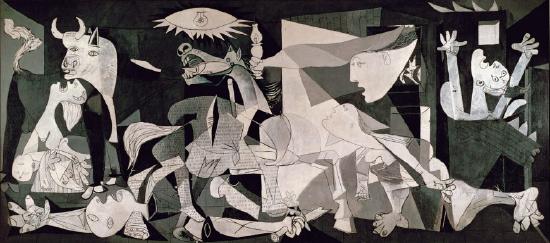
“What’s visible becomes thinkable, and what’s thinkable becomes doable.” Timothy Snyder
In 2003, when Colin Powell went to the United Nations to make a case for going to war with Iraq, U.N. officials decided to discreetly cover the tapestry reproduction of Picasso’s Guernica that graces the entrance to the Secretariat. As Maureen Dowd observed in The New York Times , “Mr. Powell can’t very well seduce the world into bombing Iraq surrounded on camera by shrieking and mutilated women, men, children, bulls and horses.” The fact that it became necessary to hide Picasso’s anti-war masterpiece to make a case for militarism reminds us just how much power images and objects have in the world. As Timothy Snyder, a prominent historian of the Holocaust, argues in the quote above, images communicate ideas and influence people’s attitudes in consequential ways. This means that the work of art history—interpreting, contextualizing, and thinking critically about visual culture, and helping others to do so— really matters : not just for those involved directly with the art world, but for society at large.
A conservative discipline?
“Art history is relevant” is not how the discipline of art history is typically framed in popular discourse. Most people picture art historians as wealthy, white, intellectually conservative, and disconnected from the rest of the world. If the humanities are viewed by many critics as outdated fields with little to contribute to “productive,” STEM-driven society, art history has become their poster child—as President Obama (shown in the distinctly non-traditional presidential portrait in Figure \(\PageIndex{2}\)) once unfortunately made clear .
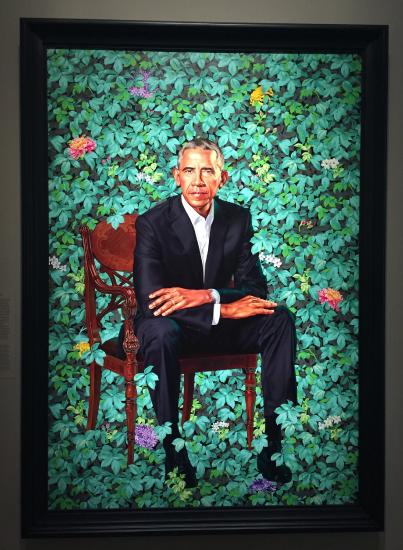
This representation is frustrating. Many are drawn to art history not because of being narrow-minded, but because they deeply respect objects that they study, and want to make sure they're treated with the same meticulous rigor that other types of scholars afford texts. Although texts are vitally important for understanding history, images and objects also have immense communicative power, and they deserve equally meticulous and nuanced study. It is key to put the works first, giving close attention to the conditions of their makers, making, and use. This approach doesn’t stop with formal or iconographic analysis, though these are important foundations. Alongside profound respect for objects, their particular meanings, and their histories, critical theory is deeply influential. Feminist, post-structuralist, and postcolonial critiques of power, politics, and representation form the basis of much of this work. Art history is not inherently a conservative discipline, but instead is relevant, critical, and a product of its current moment—just like art itself.
Still, most introductory survey courses still lean heavily on what has been handed down to us through textbooks, departmental requirements, and the foundational art historical education of the instructors: the traditional Western canon (a list of the art that is most worthy of our attention and study). Even courses that include “global” in their titles, as many now do, required squeezing in absurdly pared-down units on "non-Western art" alongside the accepted narrative trajectory of the Western survey. Despite the “global” title, the real focus of this type of class remains clear. Heaven forbid we leave anything “important” out of the Western units! These classes, sadly, become surveys of “the West” with a smattering of “the rest.” [1]
The “global” in scholarly discourse
How must the discipline of art history change, what are the assumptions it must relinquish, and what ideas must it embrace in order to effect a true dislocation of “center-periphery” models of cultural intellectual exchange? Aruna D’Souza and Jill Casid
D’Souza and Casid’s words call attention to the continuing presence of the “center-periphery” model within our discipline: that is, Western art, with its more or less accepted trajectory through classical Greece and Rome, the European Renaissance, and modern Europe and Anglo North America, has historically been accorded a central place within the discipline, whereas art from everywhere else remains at the margins. The center-periphery model applies not only geographically, but also in terms of the people who create art: for instance, Native American and some Spanish colonial art are clearly part of the “periphery,” even though they are spatially embedded in North America. The marginalization of artists of color and women artists in all regions is also an important part of this larger problem. In addition to all this, art history itself arose as a discipline within a Western, colonial context, and this context was key in framing even such basic methodological concepts as what constitutes a work of art. A gracefully-formed and elegantly painted ceramic jar like the one in Figure \(\PageIndex{3}\) may be displayed as merely "craft" rather than capital-a Art.
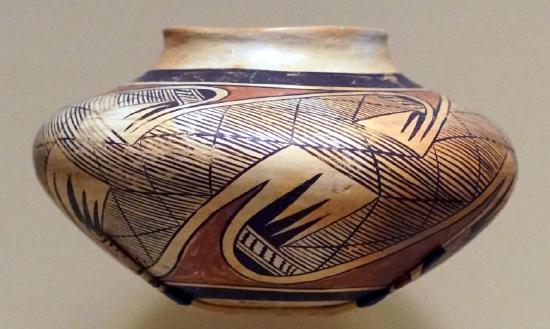
Even when the center-periphery idea is used to critique the marginalization of non-European artworks and methods, the very structure of this model upholds the idea of Europe as a conceptual “center,” reifying the very power relationship it seeks to deconstruct. What do we do with these legacies? Is it enough to simply add more works from underrepresented cultures to the existing canon? Or do we attempt to do away with binary concepts like “center and periphery” altogether, complicating the notion of hermetic styles, schools, or traditions? Or, should we look to radically redefine how we define and analyze “art” itself and, consequently, its many histories?
A range of prominent scholars have been working to address these questions, though the results have not been as rapidly or widely influential as many would like. However tantalizing, erudite, and enjoyable as some of these offerings may be, they almost all seem to lack a key aspect: broad, seamless employability at the basic level of the art history classroom.
The “global” problem in the classroom
Most of the globe remains at the periphery of undergraduate art history education, as recent studies have shown. This overwhelmingly Western bias does not end solely with departmental requirements; it also exists at the basic level of the introductory art history survey curriculum. The most widely-used textbooks still organize the history of art in terms of the well-developed Western canon, with other art traditions presented as holistic, geographically based addenda that reduce the span of entire continents and multiple centuries to single chapters.
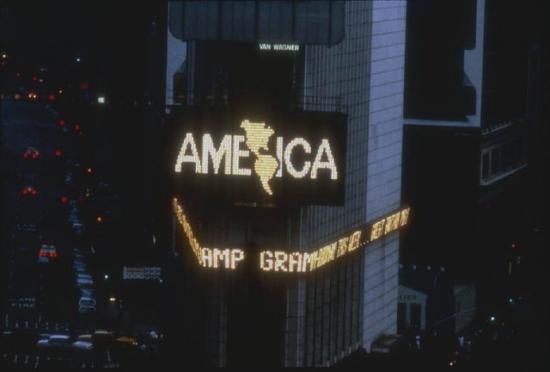
Reframing the world
In 1987, the artist Alfredo Jaar provoked furor with his public artwork A Logo for America , an animation he designed for Times Square’s Spectacolor board wherein he proclaimed that the United States is not “America.” Rather, the animation posited, the term applies to places all across the Americas—both North and South. Jaar’s snappy, 15-second jab at the narcissism and cultural hegemony of the United States reminds us of the immense power that even the most seemingly simple words or concepts can have in framing global identities and power relations. Works like this push us to question the basic ways of thinking about the world that we often assume, in light of the inequitable systemic conditions that produced them, are neutral. This process of self-reflexively examining—and working to deconstruct—those conditions is commonly referred to as the work of discursive “decolonization.”
Jaar’s emphasis on terminology reminds us that, as we consider how to decolonize the canon in terms of the artworks we include, we also have to think carefully about the analytical tools we use to interpret and contextualize them. Our methods, formulated within a primarily Western context (both in terms of the works of art they were applied to and those who applied them), come with their own inherent biases.
Editors' Note: On Decolonizing the Canon
A canon can be defined as a rule for a standard of beauty developed for artists to follow, and as a body of works considered especially important. In art history, the “Western” canon of artworks often accorded highest status and most celebrated was formulated by white Euro/American men—and consisted of art by predominantly white, Euro/American, cisgender, men. Artistic canons, however, are not static and have been changing and expanding over time. As Dr. Mary Kelly and Dr. Ceren Özpınar argue , "The conventional 'centering' of art history in Europe and America and traditional 'Western' methodologies is increasingly unsatisfactory in the current age. Therefore, further emphasis on translocal and transnational encounters are necessary in order to tease out conditions of global exchange."
Today, many scholars are thinking about how to do that work and “decolonize” canons in various disciplines, including art history. This involves an active reconsideration and reordering of an important body of works, by first labeling colonialist or settler influences and artistic cultural legacies, and then actively resisting or recasting the canon with a different set of values, artists, and influences.
For further discussion into decolonizing art history and the canon, including how that might look for educators, please explore the following resources:
- Catherine Grant and Dorothy Price's "Decolonizing Art History" features interviews with art historians about the state of the field and efforts these professionals are making towards decolonization. Professors such as James D'Emilio explore the topic, arguing: "A decolonized art history looks beyond diversifying canons, curricula, and practitioners. It recognizes that we now study, teach, and display art with culturally specific methods whose universal claims reflect early modern and modern European hegemony."
- On The New York Times' "Still Processing" podcast, Wesley Morris and Daphne A. Brooks explore the strict and problematic confines of artistic canons in their episode "We're Never Going to Get that Top 40 Out of Us."
- Amber Hickey and Ana Tuazon provide a case study for decolonizing the classroom in " Decolonizing and Diversifying Are Two Different Things: A Workshop Case Study " and a zine with Decolonial Strategies for the Art History Classroom .
“Global” vs. “world”
This critique of methods is at the root of key current discussions about the use of the word “global” itself. John Onians has proposed the term “world art studies” (as opposed to “global art history”) to differentiate between research that looks at the “global”—i.e. globalized, networked—contemporary world through a traditional art historical lens, and that which looks at the “world,” looking at the longer span of historical time and geographic space, using a variety of interdisciplinary methods . The notion of “world” art studies has become an important point of discussion within subfields such as colonial Latin American art, precisely because it entails an interdisciplinary approach that helps to cut through inherited disciplinary boundaries around artists, styles, and periods.
Questioning, critiquing, and connecting
As Benjamin Harris, a specialist on the global contemporary art world, reminds us: “A truly ‘global field of art history’ would comprise an intellectual intervention premised on a critique of Western power in the world as it exists and is reproduced (and challenged) in cultural and artistic terms.” I believe many art historians would agree with this statement, but putting it into practice—especially in the Western survey, with its well-established narratives about stylistic lineage, single heroic artists as innovators, and geographical and chronological divisions—is challenging.
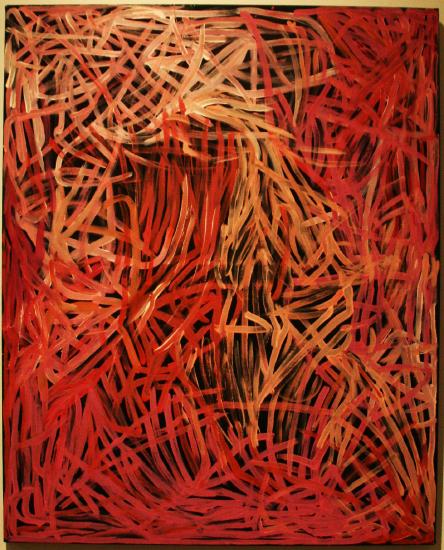
Whether or not it is important for students to take the Western survey at some point in their art history education, it is clear that students need a robust and current toolkit for looking at and analyzing art. It is also important to decenter the canon by looking at art through non-traditional lenses. Indigenous scholars, in particular, have been active in exploring alternative ways of analyzing and teaching about art. An example of this comes from Carmen Robertson, faculty in the Department of Indian Fine Arts at the First Nations University of Canada. As she states in an interview :
The first and most profound difference I find in teaching my courses is the decentering that takes place. European art is not the filter through which these courses are taught. Aboriginal values and traditions inform and direct discussions of the artwork shown in class. I embrace . . . an interdisciplinary approach [which includes] . . . connections to traditional ways, colonial adaptations and recent developments[.]
For instance, when looking at West African Igbo art, Robertson has her students read Chinua Achebe’s Things Fall Apart and then “discuss both traditional and contemporary expressions by Igbo artists, how museums display their work, and the effects of colonization on the arts.”
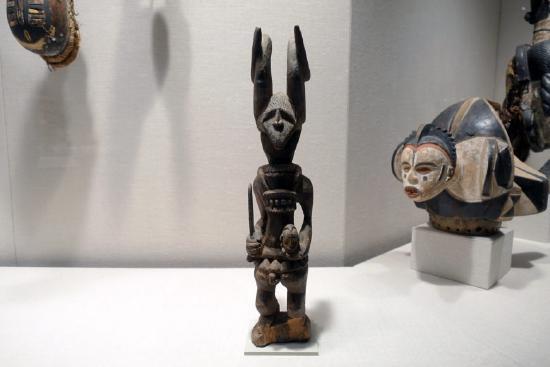
Networks as critique
What these approaches have in common, besides their willingness to expand the lens of art history to include concerns such as institutional, political, and cultural power relations, is a focus on objects as interconnected . Scholars in Global Renaissance studies, for instance, have been pioneering ways of reframing the art production of the trans-Atlantic and trans-Pacific in order to question the traditional periodization and categories of style that arose in the art history of the European Renaissance. Art historian Ananda Cohen-Aponte points to the existence and necessary acknowledgement of “many Renaissances and many Baroques whose artistic fruits spilled into territories across the Americas and Asia.” [2]
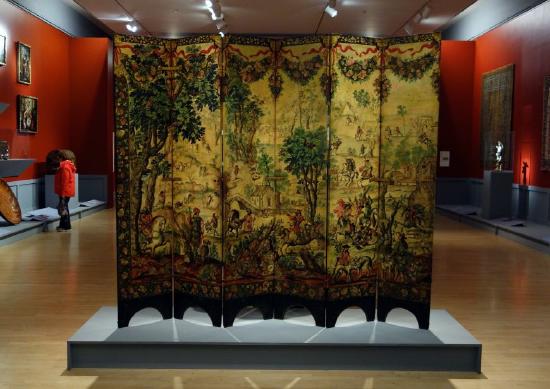
The reframing of objects within global networks can itself give rise to a form of critique, since, if we look closely and rigorously, these relationships demand new, more interdisciplinary approaches in order to be fully understood. But Cohen-Aponte brings up another important point as well: if we want to truly decolonize the discourse of art history, then, we also have an obligation to make space for Indigenous scholars and scholars from the Global South to take the lead writing the history of art.
[1] Art history’s awareness of these problems is nothing new. To name just three key (dare I say canonical?) texts: John Berger tackled these issues in his seminal 1972 series and book, Ways of Seeing ; Edward Said’s 1978 Orientalism has become its own shorthand; and Hans Belting’s many writings on globalization in the art world are a touchstone for anyone who studies contemporary art.
[2] Ananda Cohen-Aponte, " Decolonizing the Global Renaissance: A View from the Andes ," in The Globalization of Renaissance Art: A Critical Review, edited by Daniel Savoy (Leiden: Brill, 2017), 73–74.
Articles in this section:
Smarthistory, " Art history and world art history ," in Smarthistory , January 12, 2021 ( CC BY-NC-SA )
Distant Viewing in Art History. A Case Study of Artistic Productivity
- K. Bender (Author)
Identifiers (Article)
Identifiers (files).
With reference to the concept of distant reading in literary history, distant viewing is a valuable analogy for a quantitative approach to art history. In this case study of artistic productivity eight samples are analyzed, extracted from a digital thematic research collection about the iconography of Aphrodite/Venus from the Middle Ages to Modern Times. The result is an empirical finding of regularity never before highlighted in art history. The artistic productivity fits perfectly the distribution known as Lotka’s law of scientific productivity in bibliographic science. Issues of collecting and sampling are discussed and the meaning of this empirical finding is hinted. Suggestions for future research are made.
- New statistic numbers are released within the first week of the following month.
- The statistics complies to COUNTER Code of Practice (Release 5) .
- Endnote/Zotero/Mendeley (RIS)

Handbook home
- Search the Handbook
- Undergraduate courses
- Graduate courses
- Research courses
- Undergraduate subjects
- Graduate subjects
- Research subjects
- Breadth Tracks
- CAPS Login - Staff only
- Art History: Theory and Controversy
Art History: Theory and Controversy (AHIS10001)
Undergraduate level 1 Points: 12.5 Online
View full page
About this subject
- Eligibility and requirements
- Dates and times
- Further information
- Timetable (opens in new window)
Contact information
| Availability | |
|---|---|
| Fees |
This subject introduces the study of art history by focusing on the work of art through a number of case studies drawn from a Western cultural and historical context. It develops a broad understanding of the historical and aesthetic characteristics of artworks produced during selected artistic periods (for example Medieval, High Renaissance, baroque, rococo, neoclassical, contemporary art). The subject draws attention to the varying contexts informing works of art, including the relationship between art and its methods of production and preservation. its engagement with society and installation in museum settings; and the different ways in which viewers respond to art and interpret the meanings and messages which it conveys. Students should develop a range of approaches to understanding art, from issues of censorship and art, to gender and sexual identity in art, and art and politics. The subject provides students with a fundamental grounding in art history, and in the broader critical and analytical skills necessary for the study of art in later years.
Intended learning outcomes
On successful completion of the subject, students should have:
- a basic understanding of the history of visual forms and basic skills in visual analysis;
- a basic understanding of the principal methods of analysis employed in the discipline of art history; and
- basic oral skills for the discussion of visual forms and basic skills in essay writing relevant to the discipline of art history, including presenting an argument, marshalling and documenting evidence, and basic bibliographic skills.
Generic skills
On successful completion of this subject, students will be able to:
- research through the competent use of the library and other information sources, and be able to define areas of inquiry and methods of research in the preparation of essays;
- conceptualise theoretical problems, form judgements and arguments and communicate critically, creatively and theoretically through essay writing, tutorial discussion and presentations;
- communicate knowledge intelligibly and economically through essay writing and tutorial discussion;
- manage and organise workloads for recommended reading, the completion of essays and assignments and examination revision; and
- participate in team work through involvement in syndicate groups and group discussions.
Last updated: 29 May 2024
The Case for Surrealism
Speaker: Sarah Urist Green
Additional resources:
Surrealism essay from The Metropolitan Museum of Art’s Heilbrunn Timeline of Art History
Smarthistory images for teaching and learning:
[flickr_tags user_id=”82032880@N00″ tags=”Surrealism”]
More Smarthistory images…
Cite this page
Your donations help make art history free and accessible to everyone!

Art, Cultural Heritage & Law: Casebook & Guides
- Introduction
- Casebook & Guides
- Treatises & Commentaries on International Conventions
- Primary Law
- Link to: Writing Competitions This link opens in a new window
- Other Resources
Art, Cultural Heritage & Law: Casebook
Cultural Heritage & Cultural Property: Guides

Art Law: Guides & Nutshell
Recommended for purchase on 06/07/24:
- << Previous: Introduction
- Next: Treatises & Commentaries on International Conventions >>
- Last Updated: Jun 8, 2024 3:08 PM
- URL: https://guides.brooklaw.edu/artlaw
- Skip to Content
- Bulletin Home
2023-24 General Bulletin
Art History, BA
Degree: Bachelor of Arts (BA) Major: Art History
Program Overview
The art history curriculum is designed to give students a broad grounding in a variety of artistic media, with a strong emphasis on understanding the cultural context in which they were produced. Students develop technical and critical vocabularies as well as sound writing skills to analyze works of art. Study of and research on works of art in the Cleveland Museum of Art are essential components of the undergraduate curriculum. Internships for credit or with volunteer status are available at the Cleveland Museum of Art, the Museum of Contemporary Art, and other arts institutions in University Circle.
Learning Objectives
- Students will be able to demonstrate visual literacy through written and oral communication.
- Students will be able to employ critical and creative thinking to solve interpretative problems and make connections between art and larger social, political, and cultural issues.
- Students will be able to identify, locate, interpret, and analyze a variety of primary and secondary source material including archival materials and digital resources.
- Students will be able to synthesize primary and secondary textual and visual sources in order to formulate a clear, persuasive argument (oral or written) about a work of art or art historical theme.
- Students will be able to discuss and analyze how works of art express or engender social and cultural values and problems, and will be able to use multiple interpretative approaches in order to address these issues.
Undergraduate Policies
For undergraduate policies and procedures, please review the Undergraduate Academics section of the General Bulletin.
Accelerated Master's Programs
Undergraduate students may participate in accelerated programs toward graduate or professional degrees. For more information and details of the policies and procedures related to accelerated studies, please visit the Undergraduate Academics section of the General Bulletin.
Program Requirements
Students seeking to complete this major and degree program must meet the general requirements for bachelor's degrees and the Unified General Education Requirements . Students completing this program as a secondary major while completing another undergraduate degree program do not need to satisfy the school-specific requirements associated with this major.
This major requires 36 credit hours of coursework in art history, including:
| Code | Title | Hours |
|---|---|---|
| Required Courses: | ||
| Art History I | 3 | |
| Art History II | 3 | |
| Majors Seminar | 3 | |
| ARTH 200-level courses | 3-6 | |
| ARTH 300-level courses | 15-18 | |
| ARTS courses | 3-6 | |
| Total Hours | 36 | |
Students are encouraged to study broadly within the major. Students must take one course at the 200 or 300-level in four different areas from among these options:
- African Art
- Ancient Art
- Art of the Americas
- Byzantine Art
- Contemporary Art
- Early Modern Art
- Medieval Art
- Museum Studies/History of Collecting
Departmental Honors. Majors who wish to earn the Bachelor of Arts in Art History with Honors must submit a written application to the department chair no later than the fall semester of their senior year. Departmental honors are awarded upon fulfillment of the following requirements: a grade point average of at least 3.5 in the major and an A in ARTH 399 .
Print Options
Print this page.
The PDF will include all information unique to this page.
Smithsonian Institution
Site navigation.

Cosmic Journey II: Voyage into the Abyss
Hitch a ride on the Chandra X-ray Observatory as it scours deep space searching for black holes.


Celebrate Solstice Saturday
Stay out late with the Smithsonian with daytime events and parties and performances into the night!

National Pride Month
Celebrate virtually and in-person through a series of vibrant performances, talks, family activities, and resources.

Smithsonian Open Access
Download, share, and reuse more than 4.9 million 2D and 3D digital items from the Smithsonian’s collections.
Today, Friday, January 19, the following Smithsonian museums in Washington, D.C., are open:
- National Air and Space Museum
- National Museum of African American History and Culture
- National Museum of American History
- National Museum of Natural History
- Steven F. Udvar-Hazy Center, Virginia
All other D.C. museums, including the National Zoo, are closed today.
The Smithsonian Institution is the world's largest museum , education , and research complex. We are a community of learning and an opener of doors. Join us on a voyage of discovery. Explore our vast digital resources and learn online .
Plan Your Visit
Plan your visit at our Virtual Visitor Center . Get information on hours and locations and entry and visitor guidelines .
Find out what's on and learn about our events and exhibitions .
- Art & Design
- History & Culture
- Science & Nature
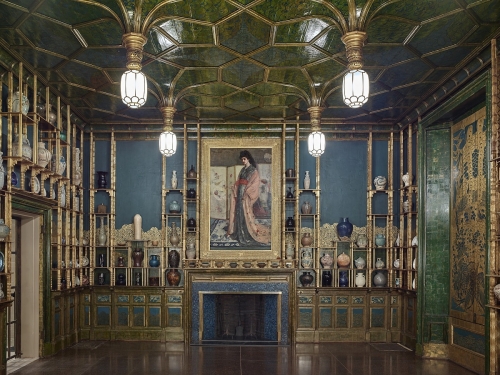
Digital Backgrounds
Put yourself in the scene! Download high-res images to use as your video meeting or desktop background.
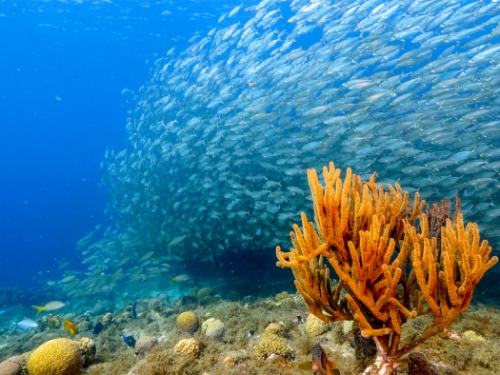
June Is Ocean Month
Dive into all things ocean with the Smithsonian during National Ocean Month.

A “Monster” in the Milky Way Galaxy

The Pandas Are Coming
Explore images and video clips of the lovable bears as the Zoo prepares to welcome a new pair of giant pandas by the end 2024.
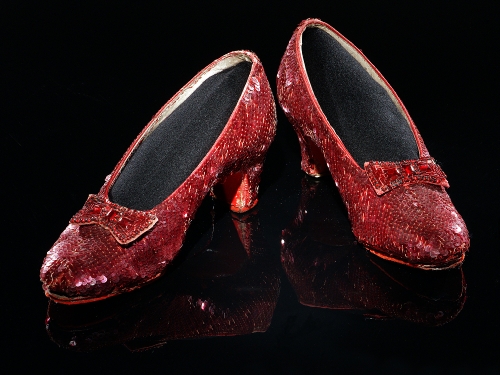
Fabulous Footwear
Along with the Ruby Slippers, the Smithsonian has some fabulous footwear in the collections.
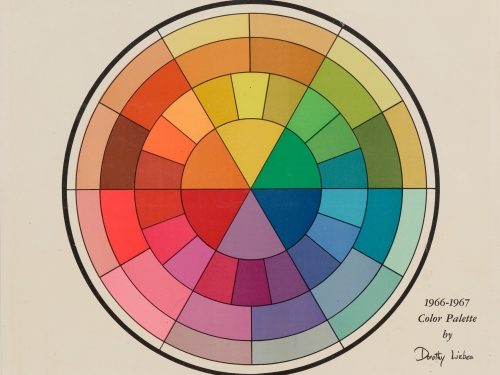
Color Journey
Take a colorful tour through art and artifacts in the Smithsonian's collections.
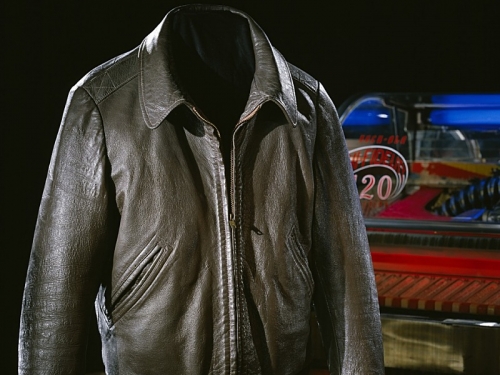
1974: A Year in the Collections
Explore items from across the Smithsonian related to the year 1974.

A Day at the Beach
A trip to the shore—without the sand in your shoes.
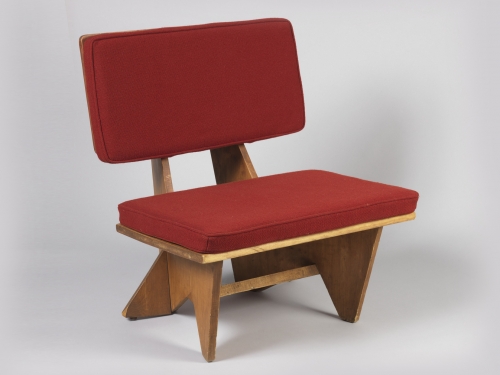
Usonian Chair
Born on this day in 1867, Frank Lloyd Wright adopted the term Usonia—a play on words for the U.S.A.—to describe his vision for an accessible and organic American style.
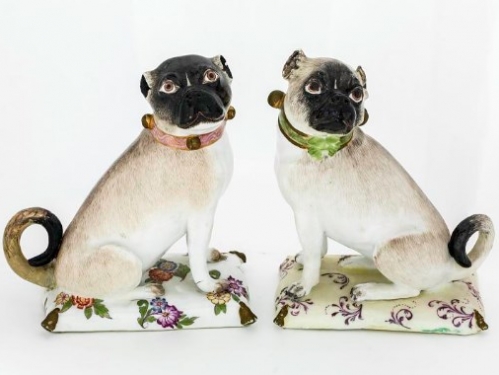
Dog: Museum's Best Friend
Sit, stay, and explore dogs from across our collections.
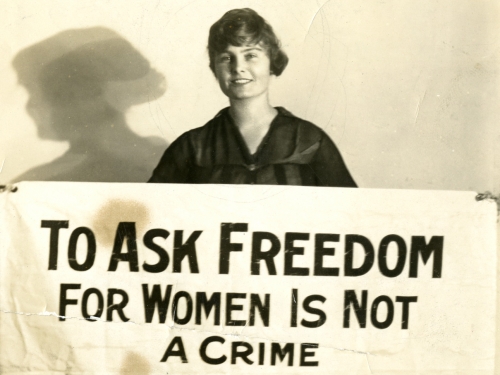
Votes for Women
A look at the fight to get the right to vote through the Smithsonian's collections.
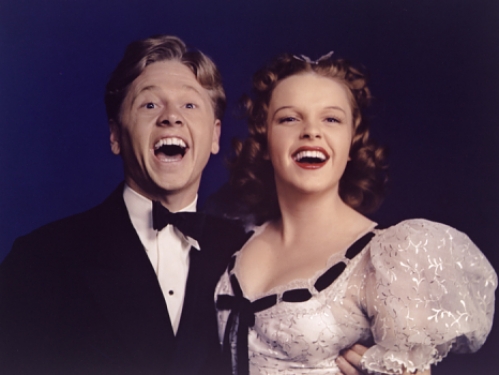
Let's Go to the Movies
Explore images and objects related to the history of motion pictures in America.
Sidedoor Podcast
The Smithsonian's flagship podcast sneaks you through the side door to learn the stories you won't find anywhere else.

Get Off My Lawn
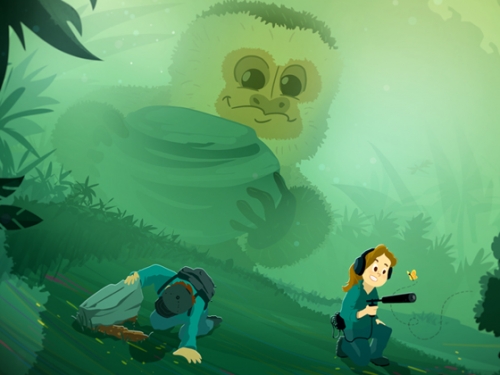
Monkeyin' Around on the Devil's Island

Cellphones Rock

The Curse of the Hope Diamond

Keep the Smithsonian thriving by becoming a member today.

Smithsonian magazine places a Smithsonian lens on the world.

Award-winning programming exploring science, nature, history, and pop culture.

Your purchase helps the Smithsonian bring exciting learning experiences to everyone.

Over 350 tours and cruises to all seven continents. Let the journey begin.
- Study Guides
- Homework Questions
Individual Case Study Analysis
Press Herald
Account Subscription: ACTIVE
Questions about your account? Our customer service team can be reached at [email protected] during business hours at (207) 791-6000 .
- Local & State
Resurgam festival, a massive yard sale and more things to do this weekend
Comedian Dave Attell is in town, Zephyr Ice is serving up cool treats and food trucks are out in force (there's an app that will tell you where).

You are able to gift 5 more articles this month.
Anyone can access the link you share with no account required. Learn more .
With a Press Herald subscription, you can gift 5 articles each month.
It looks like you do not have any active subscriptions. To get one, go to the subscriptions page .
Loading....
We’re not entirely sure how the weekend weather is going to shake out, but either way there’s a whole lot going on, so let’s get to it.

Maine Roller Derby skaters competing at Happy Wheels Skate Center in Westbrook. Photo by Jim Vernier
On Saturday and Sunday, Maine Roller Derby’s first international tournament happens at Happy Wheels Skate Center in Westbrook. There will be several exciting flat-track bouts, and if you’re a Mainer, tickets are half off.
Get a discount on tickets to Maine Roller Derby’s international tournament
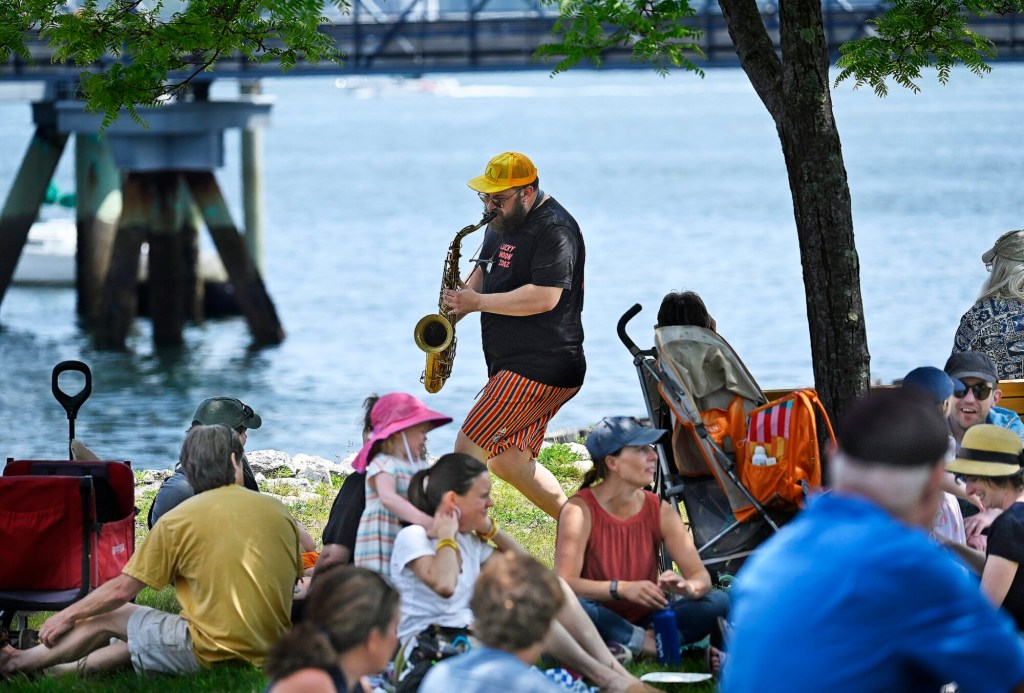
Max Abraham runs through Moon Tide Park while performing with the band Corpus Chicanery at last year’s Resurgam festival. Shawn Patrick Ouellette/Staff Photographer
The Resurgam Music and Arts Festival is Sunday from 11:30 a.m. to 7 p.m. at Ocean Gateway marine terminal and surrounding areas. The list of performers is about 17 miles long and includes Oshima Brothers Band and professional hula hoop and circus artist Nettie Loops.
Resurgam festival returns this weekend with music, arts and more
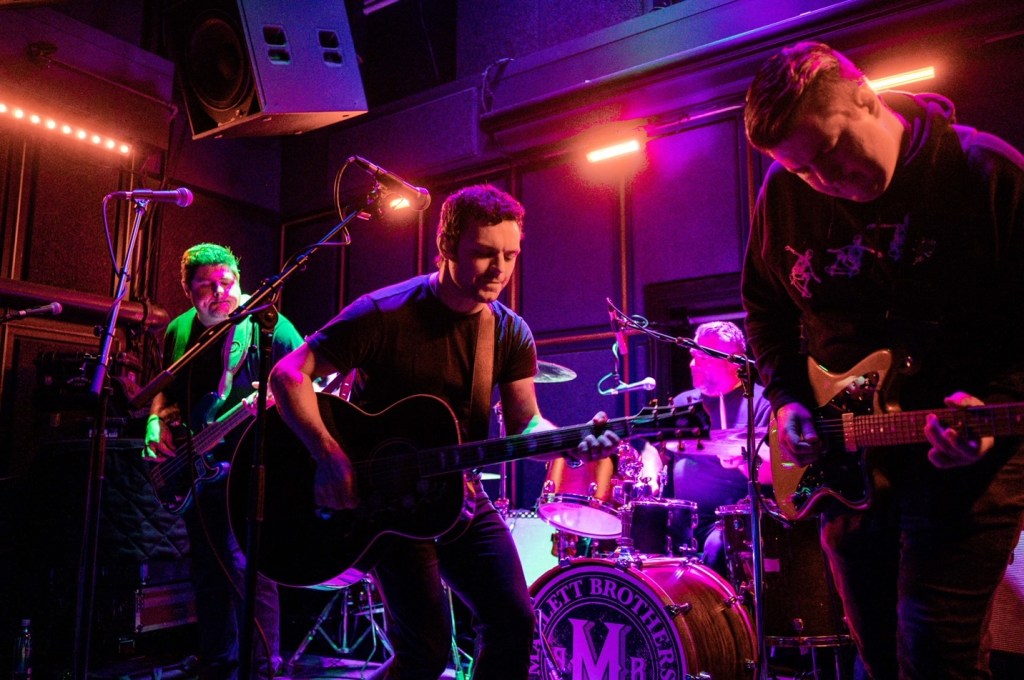
Local musician Toby McAllister, pictured here at The Press Room in Portsmouth, would of course play at a local venue on his perfect day. Photo by Corey Fitzgerald and courtesy of Toby McAllister
Another musician you can see at Resurgam is Toby McAllister from Sparks The Rescue. McAllister unpacked his perfect Maine day for us, and it includes a hike in Grafton Notch and a stop at Puzzle Mountain Bakery in Newry for cookies.
My Perfect Day: Hiking Old Speck, eating tacos and sweets, playing a show – for musician Toby McAllister, it all strikes a chord
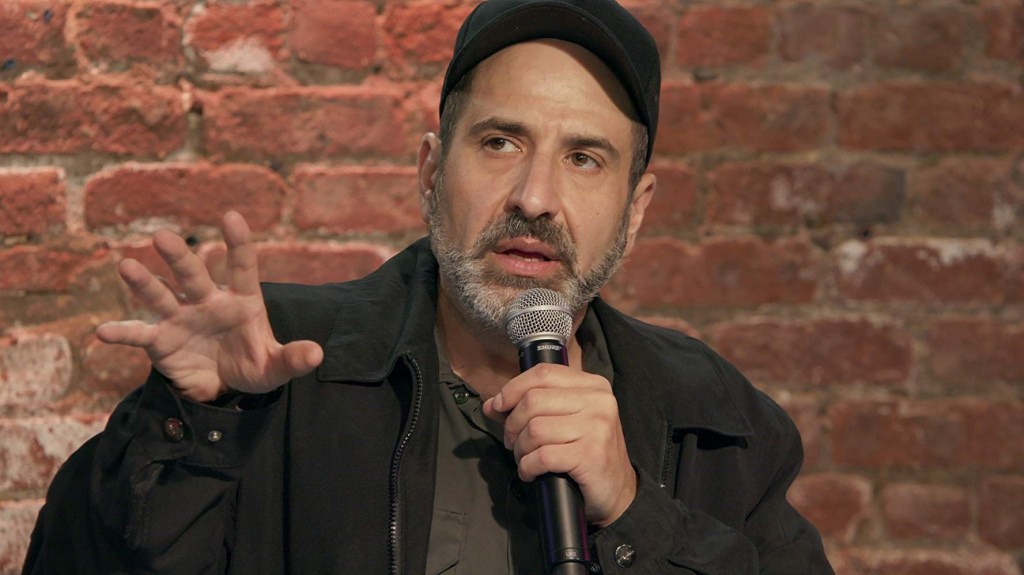
Comic Dave Attell plays the State Theatre in Portland, June 8. Photo courtesy of the State Theatre
There’s plenty else cooking this weekend , including Yoga in the Park on Saturday and the Walk the Working Waterfront tour. Both are in Portland. Or you can shop till you drop at Maine’s Ultimate Spring Yard Sale Saturday at Cumberland Fairgrounds. Need a few laughs? Grab a ticket to see comic Dave Attell at the State Theatre Saturday.
Waterfront tour, giant yard sale, comic Dave Attell
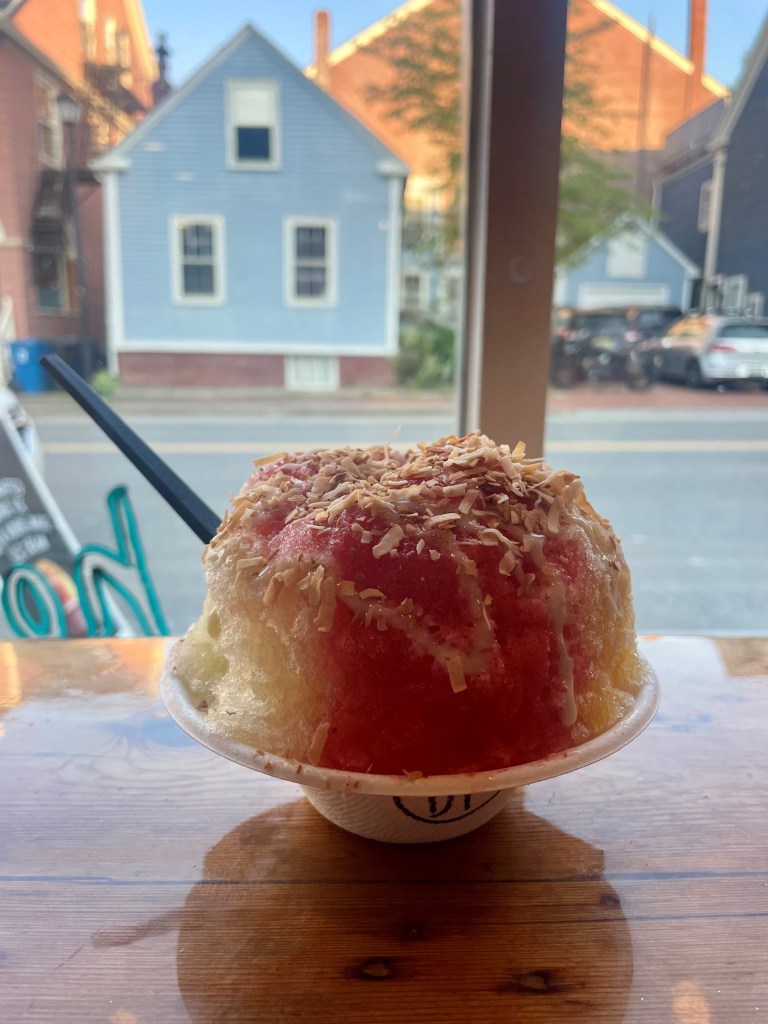
Zephyr proudly tells its customers that everything is made in house with real fruit and no dyes. Photo by Megan Gray
Satisfy your sweet tooth with something a little different this weekend. Zephyr Ice in Portland serves shaved ice atop a scoop of regular or vegan ice cream. Choose from a variety of syrup flavors, all made in-house with real fruit.
For cool, customizable treats, breeze on in to Zephyr Ice

Mainely Burgers food truck. Shawn Patrick Ouellette/Staff Photographer
Should you fancy a food truck fix, check out our massive, always growing food truck guide and get busy chowing down.
A guide to 87 food trucks rolling through Maine

A Foodtruckalico Instagram post featuring the Ugly Dumpling food truck. Photo by Justin Velgos
For even more food truck fodder, we suggest heading to Food Truckalico on Instagram . A couple of times a week, the account shares details about where and when you can find trucks in the Portland area.
Follow the food trucks with Food Truckalico on Instagram
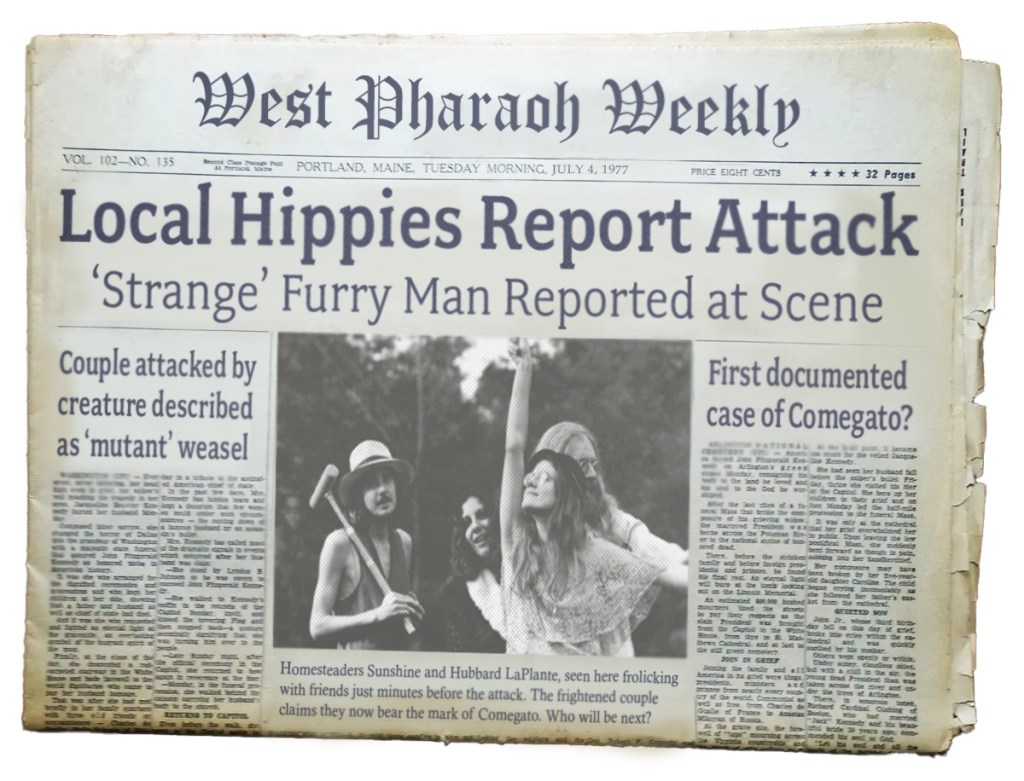
A newspaper article about a Comegato sighting from web series “Tracking the Comegato.” Photo courtesy of Kate Kaminski
If the weather does indeed relegate you to the indoors, curl up on the couch and fire up the new web series “Tracking the Comegato” about a beastly human-weasel hybrid that may or may not exist.
Could this human-weasel hybrid from Maine join the ranks of Bigfoot?
Success. Please wait for the page to reload. If the page does not reload within 5 seconds, please refresh the page.
Enter your email and password to access comments.
Forgot Password?
Don't have a commenting profile? Create one.
Hi, to comment on stories you must create a commenting profile . This profile is in addition to your subscription and website login. Already have a commenting profile? Login .
Invalid username/password.
Please check your email to confirm and complete your registration.
Create a commenting profile by providing an email address, password and display name. You will receive an email to complete the registration. Please note the display name will appear on screen when you participate.
Already registered? Log in to join the discussion.
Only subscribers are eligible to post comments. Please subscribe or login first for digital access. Here’s why .
Use the form below to reset your password. When you've submitted your account email, we will send an email with a reset code.
Send questions/comments to the editors.
Member Log In
Please enter your username and password below. Already a subscriber but don't have one? Click here .
Not a subscriber? Click here to see your options
- Art History Faculty
- Art Studio Faculty and Staff
- Art Recent News
Art History
- #173 (no title)
- PhD in Art History
- MA in Art History
- MA in Art History and Museum Studies
- MA/JD Program
- Art Studio Courses Spring 2021
- Graduate Students
- Graduate Student Blogs
- Undergraduate Students
- Alumni News
- Cleveland Symposium
- Lectures and Symposia
- Museums and Cultural Institutions
- Scholarships and Grants
- Career Options
- Forms & Documents
- Contributions to the Department of Art History and Art
- Friends of Art
- More About Joining Friends of Art
Shopping cart

College of Arts and Sciences
Department of art history and art, undergraduate.
- Introduction to Undergraduate Programs
- Minor in Visual Design
- Introduction to Graduate Programs
- Certificate in Public Humanities and Civic Engagement
Course Offerings
- Art History Course Offerings
- Art Studio Course Offerings
- Recent Alumni
- Calendar of Events
- Diversity Statement
- Race and Justice Statement
- Sustained Dialogue Website
- Forms & Documents
Case Western Reserve University provides students with the unique opportunity of taking courses in one of America’s major art museums. Its outstanding collections enable students to study at first-hand important examples of art from various world cultures. The curriculum is designed to give students a broad grounding in the study of the visual arts, with a strong emphasis on understanding the cultural context in which they were produced. Students also develop a technical and critical vocabulary as well as sound writing skills to express ideas and perceptions about works of art. Internships (both credit and non-credit) at local museums and other arts institutions provide experiential learning opportunities for those interested in careers for art history majors and minors.
UNDERGRADUATE ADVISOR Prof. Erin Benay
Mather House 316
The undergraduate advisor accepts declarations of majors, advises major and minor students in registration procedures, answers questions concerning requirements and courses, signs necessary forms, and certifies completion of requirements for the major and minor in advance of graduation.
Bachelor of Arts in Art History
This major requires 36 hours of course work in art history, including:
| Art History I | 3 | |
| Art History II | 3 | |
| Art History 200-level courses | 3-6 | |
| Majors Seminar | 3 | |
| Art History electives at the 300 level | 15-18 | |
| Art Studio courses | 3-6 | |
Students are encouraged to study broadly within the major. Students must take one course at the 200 or 300-level in four different areas:
- African Art
- Ancient Art
- Art of the Americas (including Precolombian, Latin American Art, and American Art)
- Byzantine Art
- Contemporary Art
- Early Modern Art (including Renaissance and Baroque Europe, Global Renaissance and Global Baroque)
- Medieval Art
- Museum Studies/History of Collecting
Departmental Honors . To qualify for honors, Art History majors must maintain a minimum GPA of 3.75 in Art History and follow a track consisting of at least 36 hours above the 100 level, including the general requirements for the major. To be eligible, students must also complete their Capstone Project Course* (ARTH 399) in Art History.
*Majors are not required to take a Capstone Project Course in Art History, but they are strongly encouraged to do so.
Minor in Art History
| Art History I | 3 | |
| Art History II | 3 | |
| Art History electives (at least 3 hours must be taken at the 200 level) | 12 | |
| Total Units | 18 | |

IMAGES
VIDEO
COMMENTS
The Department of Art History and Art offers opportunities to study art history, to participate in a broad range of studio offerings and to engage in pre-professional museum training. ... Art History: Case Western Reserve University. Mather House. 11201 Euclid Ave. Cleveland, OH 44106-7110. [email protected] 216.368.4118. Art Studio: Art ...
1886. The American Art Journal. 1969 - 2003. The American Art Review. 1879 - 1881. American Journal of Archaeology. 1897 - 2018. The American Journal of Archaeology and of the History of the Fine Arts. 1885 - 1896.
Program Overview. Our highly selective doctoral program in art history, founded in 1967 and offered in collaboration with the Cleveland Museum of Art, provides unique training for museum and academic careers. The object-grounded approach to the study of art history, based on the encyclopedic collections of the CMA and other area institutions ...
When it comes to earning a PhD in Art History, there are few better places to do so than Case Western Reserve University. Our campus is located in Cleveland's University Circle neighborhood, one square mile that's home to world-renowned arts institutions and a distinction as the top arts district in the country (USA Today, 2021).In this setting, we offer our highly selective doctoral program ...
Introduction. To better understand a work of art, a researcher needs information not only about the work of art and the artist, but also the context in which the work of art was created. You may need information on the culture, religion, the place, the political situation, history, etc. Research example: A student is studying a sculpture made ...
Case Western Reserve University's Master of Arts in Art History and Master of Arts in Art History and Museum Studies programs are designed to provide you with a broad knowledge of major art historical periods, scholarly and bibliographical resources, and methodologies of art history. In our object-based programs, you'll benefit from close cooperation with and access to cultural institutions ...
The most widely-used textbooks still organize the history of art in terms of the well-developed Western canon, with other art traditions presented as holistic, geographically based addenda that reduce the span of entire continents and multiple centuries to single chapters. Figure 2.2.4 2.2. 4: Alfredo Jaar, A Logo for America, 1987.
Virtual Reality and Art History: A Case Study of Digital Humanities and Immersive Learning Environments . James Hutson Lindenwood University Trenton Olsen Lindenwood University . The potential benefits of integrating immersive realities into traditional humanities curricula have been
Case Western Reserve University affords an outstanding opportunity to pursue graduate study in art history, with a distinguished faculty and a Joint Program with the Cleveland Museum of Art (CMA). ... Art History: Case Western Reserve University. Mather House. 11201 Euclid Ave. Cleveland, OH 44106-7110. [email protected] 216.368.4118. Art ...
Department of Art History and Art. Show more tabs. Mather House Phone: 216.368.4118 or 368.4039; Fax: 216.368.4681 Elina Gertsman, Acting Chair [email protected]. The Department of Art History and Art offers opportunities to study art history, to engage in pre-professional museum training, to participate in a broad range of studio ...
'A Method to Visually Rationalise Superimposed Pigment Motifs', Rock Art Research 27, no. 2 (2010): 131-36; Liam Brady and Robert Gunn, 'Digital Enhancement of Deteriorated and Superimposed Pigment Art: Methods and Case Studies', in A Companion to Rock Art, ed. Josephine McDonald and Peter Veth (Oxford: Wiley-Blackwell, 2012): 627-43.
Three digital art history case studies share successes, mistakes, and the how and why of DH methods in art history
With reference to the concept of distant reading in literary history, distant viewing is a valuable analogy for a quantitative approach to art history. In this case study of artistic productivity eight samples are analyzed, extracted from a digital thematic research collection about the iconography of Aphrodite/Venus from the Middle Ages to Modern Times.
This subject introduces the study of art history by focusing on the work of art through a number of case studies drawn from a Western cultural and historical context. It develops a broad understanding of the historical and aesthetic characteristics of artworks produced during selected artistic periods (for example Medieval, High Renaissance ...
Degree: Master of Arts (MA) Field of Study: Art History and Museum Studies. Program Overview. The MA program in art history and museum studies includes the same broad requirements and objectives as the MA program in art history, along with a year-long museum studies course and two supervised museum internships. Graduate Policies
Surrealism and Women. A brief guide to Egyptian Surrealism. André Masson, Battle of Fishes. René Magritte, The Treachery of Images (Ceci n'est pas une pipe) The Palace at 4 a.m. Hans Bellmer, The Doll/La Poupée. Meret Oppenheim, Object (Fur-covered cup, saucer, and spoon) Conceptual + Performance Art. Minimalism + Earthworks.
The Art History program of Case Western Reserve University also offers an opportunity to investigate art historical problems in some depth. In addition to the regular graduate school application form, applicants to the graduate program in art history are required to submit GRE scores and copies of two research papers that they consider to ...
Art Law: A Concise Guide for Artists, Curators and Museum Professionals by Michael E. Jones. Publication Date: 2nd ed. 2024. Excerpt from ebook's description: "Covering topics such as acquisition, grants, and buying and selling, this book takes a look at the ethical and legal issues and rights that confront the art community and museums.
The art history curriculum is designed to give students a broad grounding in a variety of artistic media, with a strong emphasis on understanding the cultural context in which they were produced. Students develop technical and critical vocabularies as well as sound writing skills to analyze works of art. Study of and research on works of art in ...
Welcome. The Smithsonian Institution is the world's largest museum, education, and research complex. We are a community of learning and an opener of doors. Join us on a voyage of discovery. Explore our vast digital resources and learn online.
1 Individual Case Study Analysis- BUSI 100 Name School Course Name and Number Instructor Due Date. 2 Ethics in Art Dealing: How Should Museums Handle Stolen Art? Executive Summary The world of art has incredibly been hit by a scandal after Jean-Luc Martinez, the former president of Louvre, was found guilty of having engaged in money laundering ...
The Master of Arts program in art history is designed to provide the student with a broad knowledge of the major art historical periods, the scholarly and bibliographical resources, and the methodologies of art history. It also offers an opportunity to investigate art historical problems in some depth. In addition to the regular graduate school ...
The Resurgam Music and Arts Festival is Sunday from 11:30 a.m. to 7 p.m. at Ocean Gateway marine terminal and surrounding areas. The list of performers is about 17 miles long and includes Oshima ...
This major requires 36 hours of course work in art history, including: Students are encouraged to study broadly within the major. Students must take one course at the 200 or 300-level in four different areas: Departmental Honors. To qualify for honors, Art History majors must maintain a minimum GPA of 3.75 in Art History and follow a track ...